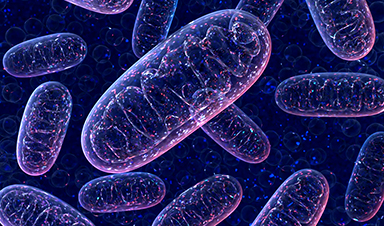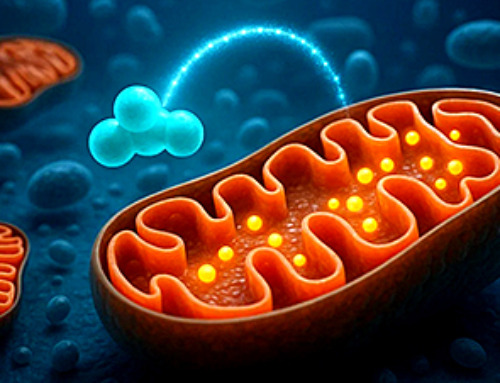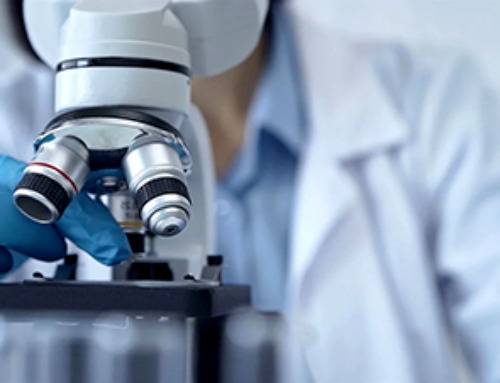Autoimmune diseases are widespread and notoriously difficult to treat. In part, this is because why the immune system attacks its own tissues in patients with these conditions remains poorly understood.
In a study recently published in Cell, researchers from Osaka University have revealed that the body’s own proteins with unusual structure trigger immune cells to unleash a wave of inflammation that leads to autoimmunity.
Autoimmune diseases develop when the body’s immune system mistakenly attacks its own tissues instead of fighting off foreign invaders like bacteria or viruses. However, it has long been a mystery why this happens, as the immune system has many checks and balances to make sure that it only reacts to ‘non-self’ triggers.
“T cells have been thought to discriminate between small fragments of protein derived from self and non-self proteins presented on the major histocompatibility complex II (MHC-II), and ‘trained’ not to respond self-antigens” explains senior author of the study Hisashi Arase.
However, when the MHC-II is missing a crucial piece called the invariant chain (Ii), it can present larger, misfolded self antigens, called neoself-antigens, to T cells.”
Hisashi Arase, Osaka University
Given that autoantibodies to neoself-antigens are frequently found in patients with autoimmune diseases, the researchers explored T cell reactivity in patients with lupus and in mice, in which Ii was depleted from adult. They also investigated the effect of Epstein–Barr virus (EBV) infection, a risk factor for lupus, on T cell reactivity to neoself-antigens.
“The results were striking,” says Shunsuke Mori, lead author. “We found that approximately 10% of clonally expanded T cell repertoire in lupus patients recognized neoself-antigens. Furthermore, induction of neoself-antigens induced lupus-like disease in mice, meaning that they mounted an immune response to the body’s own tissues, thereby causing autoimmune disease.”
Furthermore, the researchers found that reactivation of EBV, which most people are infected with but is usually dormant, increases the presentation of neoself-antigens on MHC-II through downregulating the expression of Ii, triggering the activation of T cells directed against the body. This could explain why EBV reactivation is linked to the onset or exacerbation of lupus.
“Our findings demonstrate that T cells discriminate self- and neoself-antigens and do not recognize neoself-antigens as self antigens, thus leading to the development of autoimmunity when neoself-antigens are presented on MHC-II,” says Arase.
This study substantially increases our understanding of self-tolerance of T cells as well as the causes of autoimmune disease by identifying neoself-antigens as a distinct class of antigens that trigger an inappropriate immune response. This insight into why the body begins to attack itself could help develop new treatments for autoimmune disorders like lupus.
Mori, S., et al. (2024) Neoself-antigens are the primary target for autoreactive T cells in human lupus. Cell. doi.org/10.1016/j.cell.2024.08.025.
News
Breakthrough Drug Restores Vision: Researchers Successfully Reverse Retinal Damage
Blocking the PROX1 protein allowed KAIST researchers to regenerate damaged retinas and restore vision in mice. Vision is one of the most important human senses, yet more than 300 million people around the world are at [...]
Differentiating cancerous and healthy cells through motion analysis
Researchers from Tokyo Metropolitan University have found that the motion of unlabeled cells can be used to tell whether they are cancerous or healthy. They observed malignant fibrosarcoma cells and [...]
This Tiny Cellular Gate Could Be the Key to Curing Cancer – And Regrowing Hair
After more than five decades of mystery, scientists have finally unveiled the detailed structure and function of a long-theorized molecular machine in our mitochondria — the mitochondrial pyruvate carrier. This microscopic gatekeeper controls how [...]
Unlocking Vision’s Secrets: Researchers Reveal 3D Structure of Key Eye Protein
Researchers have uncovered the 3D structure of RBP3, a key protein in vision, revealing how it transports retinoids and fatty acids and how its dysfunction may lead to retinal diseases. Proteins play a critical [...]
5 Key Facts About Nanoplastics and How They Affect the Human Body
Nanoplastics are typically defined as plastic particles smaller than 1000 nanometers. These particles are increasingly being detected in human tissues: they can bypass biological barriers, accumulate in organs, and may influence health in ways [...]
Measles Is Back: Doctors Warn of Dangerous Surge Across the U.S.
Parents are encouraged to contact their pediatrician if their child has been exposed to measles or is showing symptoms. Pediatric infectious disease experts are emphasizing the critical importance of measles vaccination, as the highly [...]
AI at the Speed of Light: How Silicon Photonics Are Reinventing Hardware
A cutting-edge AI acceleration platform powered by light rather than electricity could revolutionize how AI is trained and deployed. Using photonic integrated circuits made from advanced III-V semiconductors, researchers have developed a system that vastly [...]
A Grain of Brain, 523 Million Synapses, Most Complicated Neuroscience Experiment Ever Attempted
A team of over 150 scientists has achieved what once seemed impossible: a complete wiring and activity map of a tiny section of a mammalian brain. This feat, part of the MICrONS Project, rivals [...]
The Secret “Radar” Bacteria Use To Outsmart Their Enemies
A chemical radar allows bacteria to sense and eliminate predators. Investigating how microorganisms communicate deepens our understanding of the complex ecological interactions that shape our environment is an area of key focus for the [...]
Psychologists explore ethical issues associated with human-AI relationships
It's becoming increasingly commonplace for people to develop intimate, long-term relationships with artificial intelligence (AI) technologies. At their extreme, people have "married" their AI companions in non-legally binding ceremonies, and at least two people [...]
When You Lose Weight, Where Does It Actually Go?
Most health professionals lack a clear understanding of how body fat is lost, often subscribing to misconceptions like fat converting to energy or muscle. The truth is, fat is actually broken down into carbon [...]
How Everyday Plastics Quietly Turn Into DNA-Damaging Nanoparticles
The same unique structure that makes plastic so versatile also makes it susceptible to breaking down into harmful micro- and nanoscale particles. The world is saturated with trillions of microscopic and nanoscopic plastic particles, some smaller [...]
AI Outperforms Physicians in Real-World Urgent Care Decisions, Study Finds
The study, conducted at the virtual urgent care clinic Cedars-Sinai Connect in LA, compared recommendations given in about 500 visits of adult patients with relatively common symptoms – respiratory, urinary, eye, vaginal and dental. [...]
Challenging the Big Bang: A Multi-Singularity Origin for the Universe
In a study published in the journal Classical and Quantum Gravity, Dr. Richard Lieu, a physics professor at The University of Alabama in Huntsville (UAH), which is a part of The University of Alabama System, suggests that [...]
New drug restores vision by regenerating retinal nerves
Vision is one of the most crucial human senses, yet over 300 million people worldwide are at risk of vision loss due to various retinal diseases. While recent advancements in retinal disease treatments have [...]
Shingles vaccine cuts dementia risk by 20%, new study shows
A shingles shot may do more than prevent rash — it could help shield the aging brain from dementia, according to a landmark study using real-world data from the UK. A routine vaccine could [...]





















